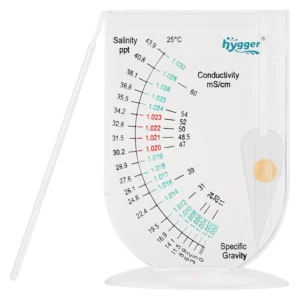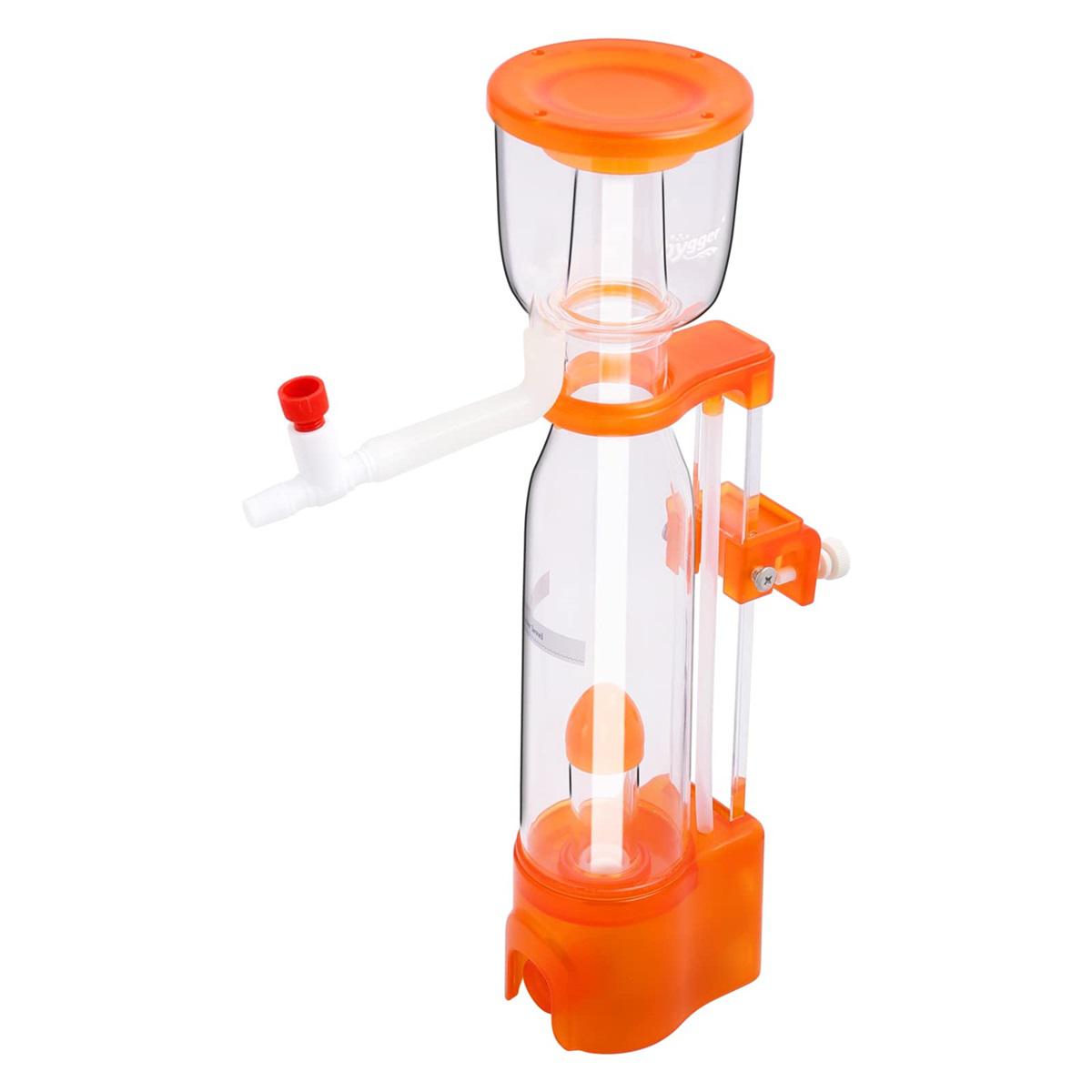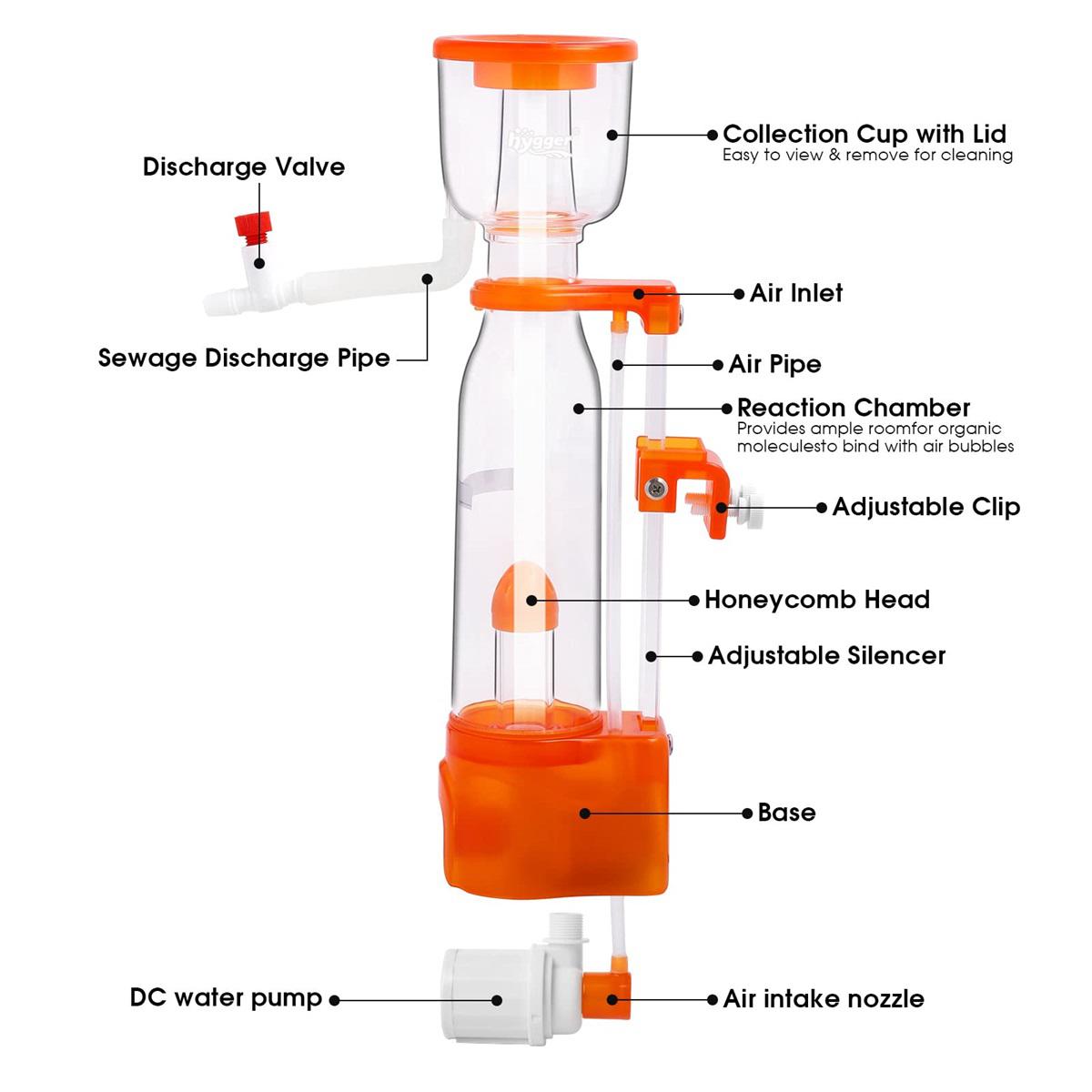The Fascinating Marine Feather Star Anecdote
Ever wondered about those delicate, feather-like creatures in the ocean? Are they dangerous, and how on earth do they eat without a mouth? Dive into the underwater world of feather stars, or crinoids, where we unravel the mysteries surrounding these feather sea stars mesmerizing beings. Worried about safety, or what do feather stars eat? We’ve got you covered.
Curious about feather sea star’s unique feeding habits and where they live? We’ve got the answers. But wait, there’s more – ever heard the intriguing anecdotes about their feeding methods and regenerative abilities? And what’s the deal with sea lilies? Are they the same as feather stars? Join us as we explore these questions, debunk myths, and even ponder the possibility of having feather stars in your home aquarium.
Let’s unravel the secrets of these feather star aquatic wonders together!
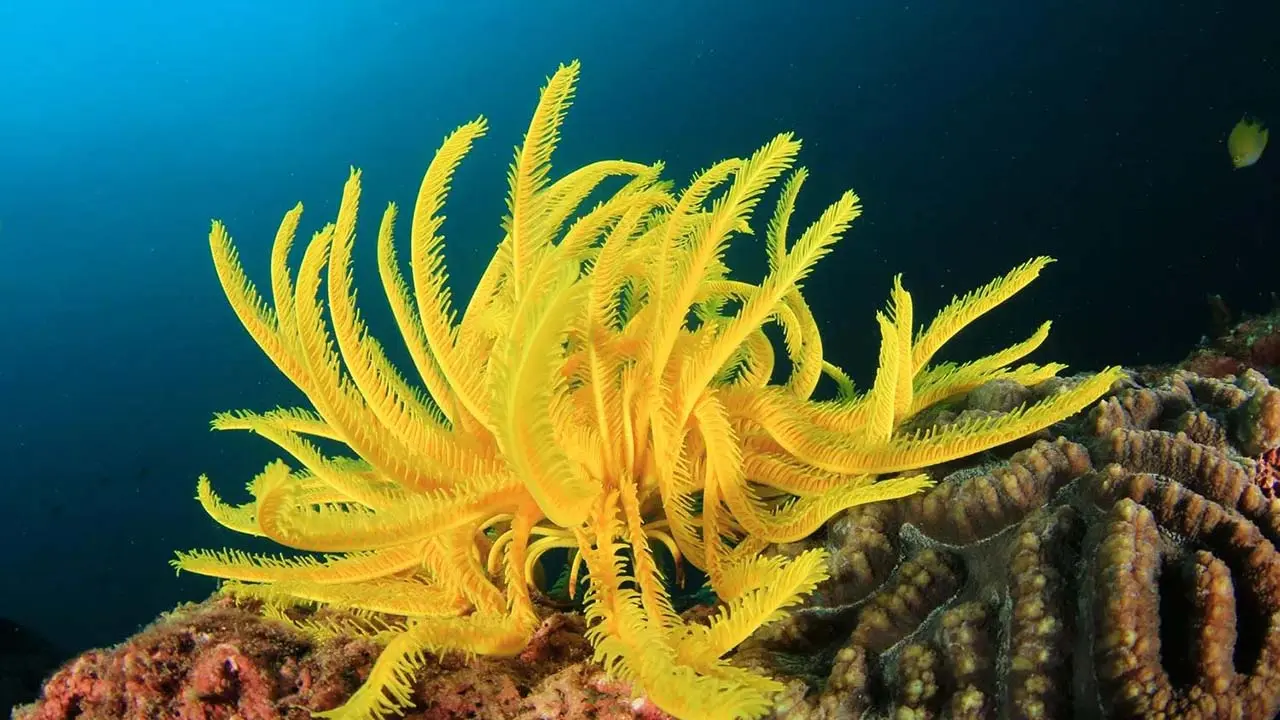
Are Feather Stars Dangerous
Feather stars, also called crinoids, are not normally considered risky to humans. These marine creatures are a sort of echinoderm and are frequently observed connected to the sea floor or coral reefs. While they have lengthy feathery arms that can be visually striking, they do not possess any venom or penetrating cells that would harm humans.
Feather stars broadly feed on plankton and different tiny organisms in the water column by using their feather-like arms to catch the prey. They are clear-out feeders and do not have any competitive tendencies, closer to human beings. In reality, they’re generally quite docile and could often retreat or swim away if disturbed.
How Do Feather Stars Eat
Feather stars have precise feeding mechanisms that allow them to seize and consume food particles from the water.
1. Dietary desires
Feather stars are filter feeders, which means they consume small particles suspended within the water. Their diet primarily consists of plankton, microscopic organisms, and natural dependents. They use their feathery arms, referred to as pinnules, to filter food particles from the water column.
2. Habitat
Feather stars are discovered in diverse marine habitats worldwide, along with coral reefs, rocky seabeds, and even deep-sea environments. They attach themselves to a substrate, such as rocks or coral, in the usage of their lengthy, bendy stalks.
3. Feeding mechanism
Feather stars have a specialized structure called a “tube foot” on each pinnule. These tube feet are covered in tiny hair-like structures called cilia, which create a current of water that flows toward the mouth of the feather celebrity.
When water passes over the pinnules, small particles along with plankton and organic matter end up trapped inside the mucus that covers the cilia. The feather’s big name then uses its tube feet to transfer the trapped particles to its mouth, located at the center of its body.
4. Size
Feather stars are available in a maximum of 20 centimeters in length. And they possess 20–30 cirri per arm. Their flexible hands and stalks allow them to move gracefully through the water, resembling a feather-like shape.
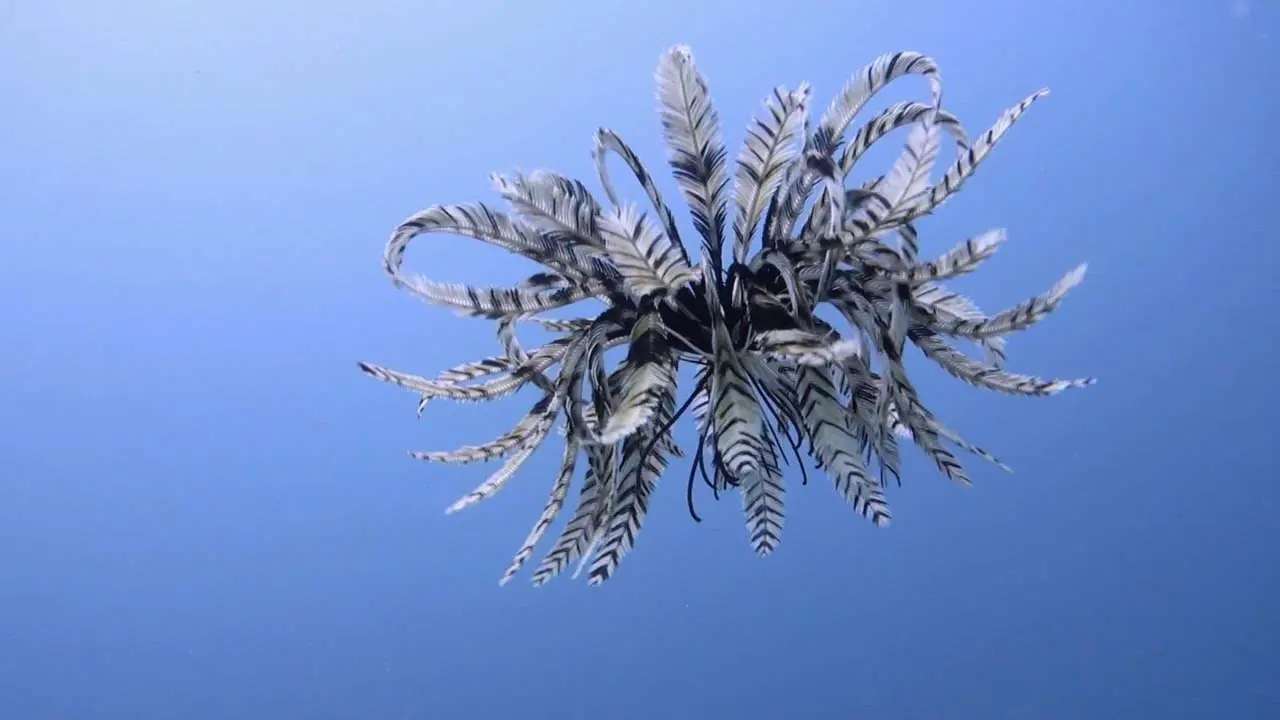
The Anecdote of Feather Star
One thrilling anecdote about feather stars is their precise feeding method. Unlike most different animals, feather stars don’t have a mouth or a stomach. Instead, they use a specialized shape known as a fan of cilia to capture tiny particles of meal from the surrounding water. These cilia create a modern-day that brings the particles closer to the feather star’s mouth, which is located at the top facet of its frame.
Another exciting reality about feather stars is their potential to regenerate. If a feather star loses one or more of its hands due to predation or harm, it has the exceptional ability to grow them back. This manner can take numerous weeks or maybe months, ultimately, the feather big name will have a complete set of hands another time.
Feather stars are also regarded for his or her vibrant hues and complex patterns. Some species of feather stars have stunning, brightly colored palms that cause them to stand out from their marine environment. These colors serve as a form of camouflage or warning to predators, as well as attracting potential feather star mates.
Sea Lilies vs Feather Star
Sea lilies and feather stars are types of marine animals that belong to their identical family, the crinoids. While they share a few similarities, there also are awesome variations among these two species.
Similarities
- One similarity between sea lilies and feather stars is their simple structure. Both animals have a protracted stem-like structure called a stalk, which attaches them to the sea floor or other surfaces. This stalk is made from calcium carbonate plates, giving them a rigid and strong help gadget.
- Another similarity is their feeding technique. Both sea lilies and feather stars are filter feeders, meaning they use their feathery palms to seize tiny organisms and suspended particles from the water. They have specialized tube feet on their arms that assist in controlling and directing meals toward their mouths.
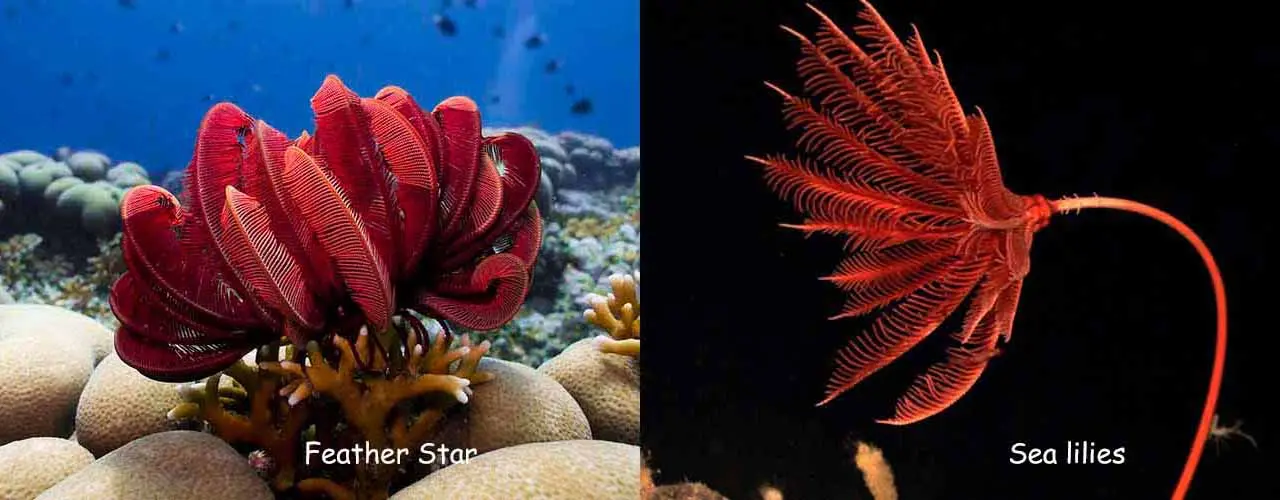
Differences
- Sea lilies are commonly sessile, which means they are permanently connected to a floor and can’t move around. On the other hand, feather stars have a more flexible stalk and might actively move slowly or swim with the usage of their hands, enabling them to relocate or discover meals.
- Another distinction lies in their arm shape. Sea lilies generally have extra numerous and delicate arms that are arranged in a radial sample across the important disk. In evaluation, feather stars have fewer, however thicker and greater sturdy arms that branch out in a feathery or furry pattern, consequently as their name.
- Sea lilies frequently have longer stalks as compared to feather stars, permitting them to enlarge similarly above the seabed. Feather stars, however, have a tendency to have shorter stalks and a more elongated body shape.
Can Feather Stars Grow in Home Aquariums
Feather stars are beautiful and delicate marine creatures that are frequently well-liked by way of aquarium fanatics. While it is possible to hold feather stars in a home aquarium, it can be challenging and unsuitable for all hobbyists. If you are a skilled aquarium hobbyist with the necessary information and resources, it is possible to correctly keep feather stars in a marine tank.
Feather stars are filter feeders, meaning they rely upon a regular delivery of microscopic plankton and different natural debris to continue to exist. This can be tough to replicate in a home aquarium, as maintaining the right balance of water first-class and nutrition can be complicated. Additionally, feather stars require a stable surrounding with the right water waft and temperature, which may be difficult to gain in a small tank.
Feather stars commonly feed on live phytoplankton and zooplankton, which may not be readily available or sustainable for long-term feeding in a home aquarium. Without the right diet plan, feather stars won’t thrive or may additionally even perish.
Furthermore, feather stars have unique care requirements that need to be met. They are sensitive to changes in water chemistry, including fluctuations in pH or salinity. They additionally require appropriate substrate and hiding locations to connect their stalks and holdfasts.
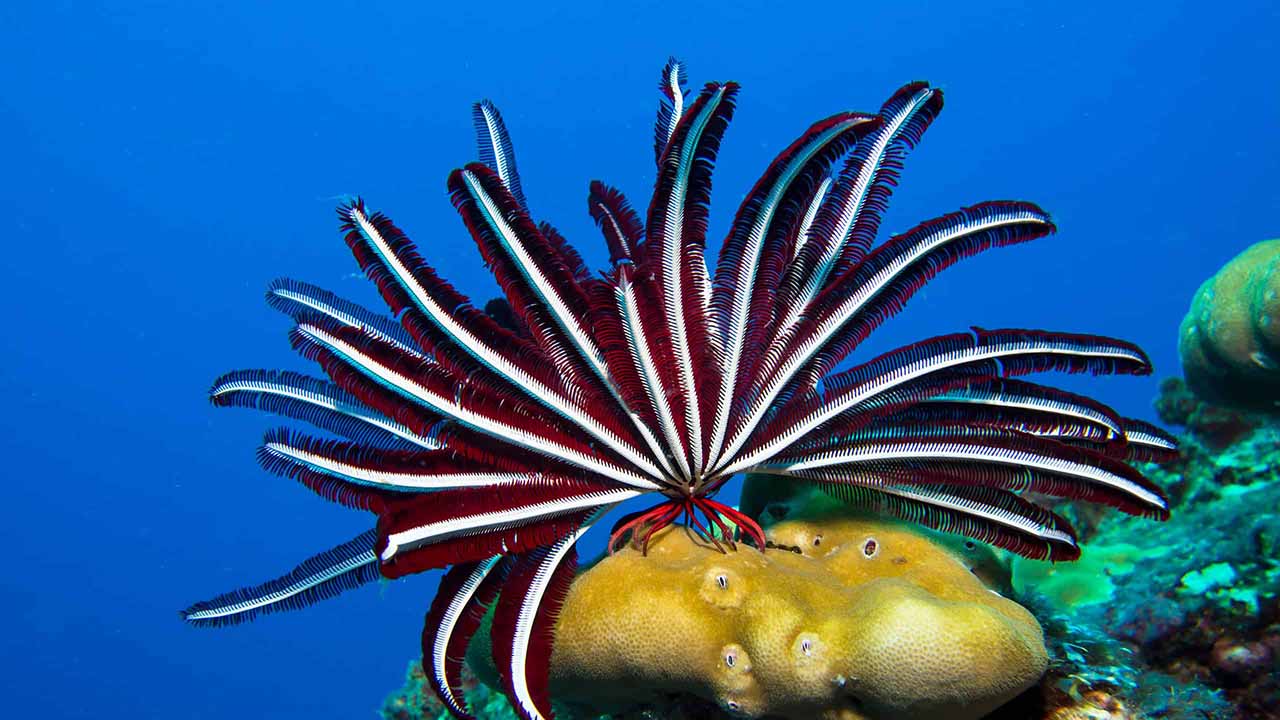
Conclusion
In conclusion, feather stars, or crinoids, reveal a fascinating world of gentle marine beauty and intricate feeding mechanisms. Despite their alluring appearance, they pose no threat to humans. Their unique feeding methods, regenerative abilities, and differences from sea lilies add to the allure. While challenging, experienced aquarium enthusiasts may attempt to keep them, but it requires careful consideration of their specific needs.
Related Topics
Aquarium Anecdote – Fun Facts About Fish
How the Aquarium Enthusiasts Play the Aquariums

